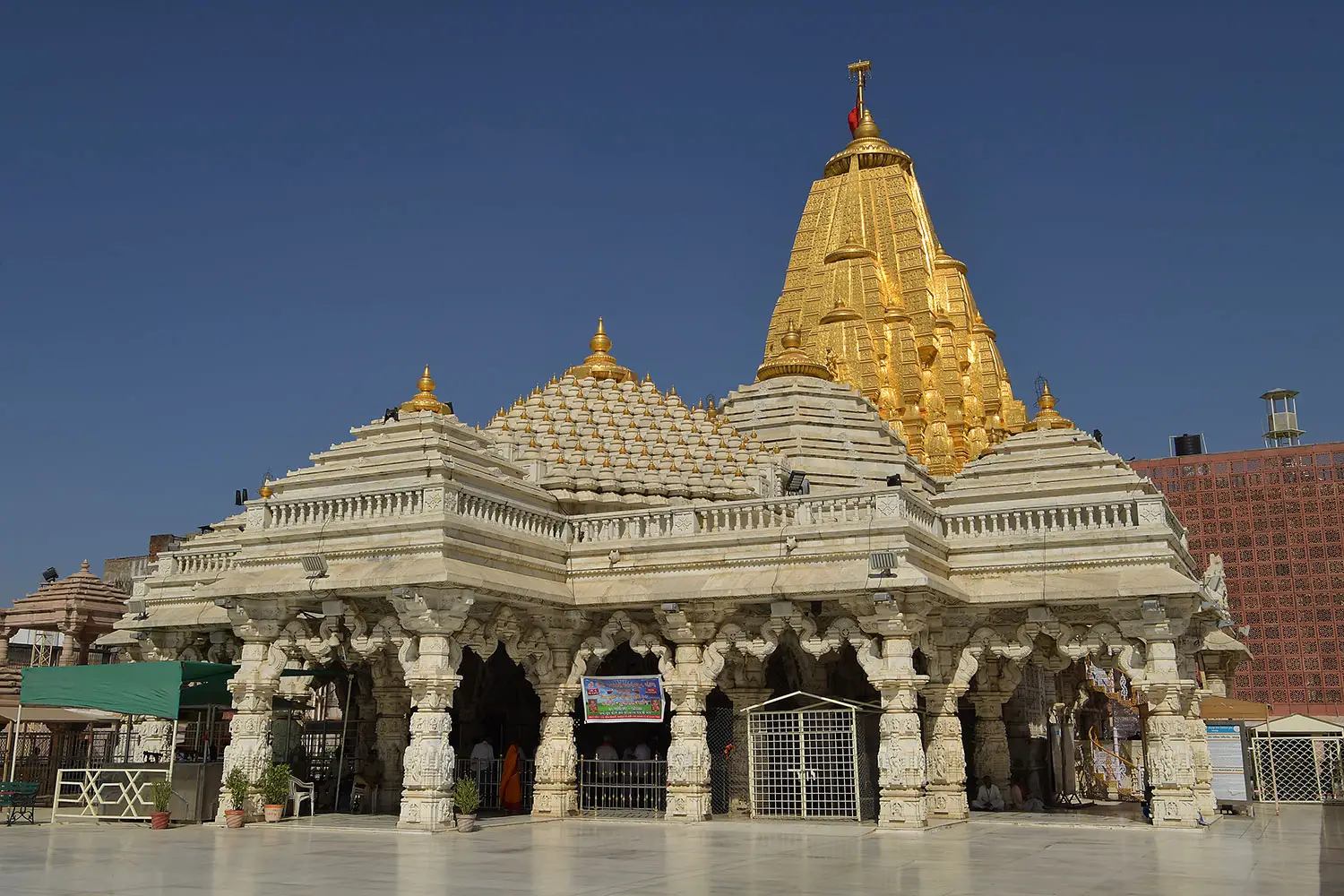The Magnificence of Somnath Temple: A Spiritual Jewel of India
Introduction: Nestled on the western coast of Gujarat, India, the Somnath Temple stands as a testament to the enduring spirit of devotion and resilience. Revered as the “Protector of the Moon God,” this ancient temple has witnessed centuries of history, destruction, and reconstruction, making it a symbol of unwavering faith and cultural richness.
Transportation:
By Air: The nearest airport to Somnath is Diu Airport, approximately 80 kilometers away. Visitors can also choose to fly into Porbandar Airport, which is around 125 kilometers from Somnath. Both airports offer domestic flights connecting to major cities in India.
By Train: Veraval Railway Station, just 7 kilometers from Somnath, serves as the primary railway link. It is well-connected to major cities in Gujarat and other parts of India. Trains like the Somnath Express provide a convenient and scenic journey to this spiritual destination.
By Road: Somnath has a well-developed road network, and buses, taxis, and private vehicles are popular choices for reaching the temple. State-run and private buses connect Somnath to cities like Ahmedabad, Dwarka, and Junagadh. The road trip offers picturesque views of the Gujarat landscape.
Accommodations:
Temple Guesthouses: Somnath Temple Trust provides comfortable accommodations for pilgrims within the temple complex. These guesthouses offer a convenient stay for devotees, ensuring proximity to the sacred site.
Hotels and Resorts: The surrounding area boasts a range of hotels and resorts catering to various budgets and preferences. From luxury accommodations with sea views to budget-friendly options, visitors have ample choices for a comfortable stay.
Local Attractions:
Somnath Beach: The serene Somnath Beach, located close to the temple, offers a peaceful retreat. Visitors can enjoy the calming waves and the beautiful sunset, creating a tranquil atmosphere for contemplation.
Prabhas Patan Museum: For those interested in the region’s history, the Prabhas Patan Museum provides insights into the archaeological significance of Somnath. The museum displays artifacts, sculptures, and exhibits related to the temple’s rich past.
Cultural and Spiritual Activities:
Evening Aarti: Participate in the mesmerizing evening aarti (ceremonial worship) at Somnath Temple. The rhythmic chanting, the sound of bells, and the illuminated temple create a spiritual ambiance that leaves a lasting impression.
Light and Sound Show: The temple premises host a captivating light and sound show narrating the history and legends associated with Somnath. This multimedia presentation adds an enriching layer to the visitor’s experience.
Culinary Delights:
Local Cuisine: Indulge in the diverse and delicious Gujarati cuisine available in the vicinity. From traditional thalis to street food, the local culinary scene offers a delightful gastronomic experience.
Historical Significance: Ancient Roots The history of Somnath Temple dates back to antiquity, with mentions in various ancient texts, including the Puranas. Legend has it that the original temple was built by Lord Soma (the Moon God) himself out of gold, followed by subsequent constructions by the likes of Lord Ravana and Lord Krishna.
Invaders and Reconstructions Over the centuries, Somnath Temple faced numerous invasions, with the most infamous being the repeated destruction by foreign conquerors, including Mahmud of Ghazni. Despite these setbacks, the temple was rebuilt multiple times by devout rulers and patrons, symbolizing the indomitable spirit of the people.
Architecture and Design: Chalukyan Style The current structure of the Somnath Temple is a blend of various architectural styles, primarily reflecting the Chalukyan style. The temple complex features intricate carvings, sculptures, and a stunning blend of craftsmanship that showcases the artistic prowess of ancient Indian artisans.
Jyotirlinga: The Lingam of Light At the heart of the temple lies the sacred Jyotirlinga, believed to be the first among the twelve Jyotirlingas of Lord Shiva. The Lingam is adorned with intricate silver embellishments and holds immense spiritual significance for millions of devotees who visit the temple seeking blessings and spiritual solace.
Religious Practices and Festivals: Devotees from across the globe flock to Somnath to participate in various religious practices and rituals. The temple follows a daily schedule of pujas (rituals) and aartis (ceremonial worship), creating an atmosphere of divine serenity.
Maha Shivaratri The festival of Maha Shivaratri holds special significance at Somnath Temple, attracting a massive congregation of devotees. The night-long celebrations include special prayers, cultural events, and a divine aura that envelops the temple precincts.
Modern Amenities and Facilities: In recent years, the temple complex has undergone extensive renovations and modernization to enhance the overall visitor experience. Facilities such as guesthouses, information centers, and well-maintained surroundings aim to make the pilgrimage to Somnath more accessible and comfortable for devotees.
Visitor Experience: The ambiance around Somnath Temple is one of spiritual tranquility and cultural richness. The rhythmic chanting of prayers, the fragrance of incense, and the awe-inspiring architecture create an atmosphere that transports visitors to a realm of divine connection.
Conclusion: Somnath Temple, with its storied past and spiritual grandeur, stands not only as a religious icon but also as a symbol of India’s rich cultural heritage. The enduring appeal of Somnath lies not just in its architectural marvels but in the resilience of faith that has withstood the tests of time, making it a must-visit destination for those seeking a profound spiritual experience.
Author ,
Dhanush Kumar.
Enter your email to get the Latest Updated Exploring News and Topics
Discover more from atozexplore.com
Subscribe to get the latest posts sent to your email.






